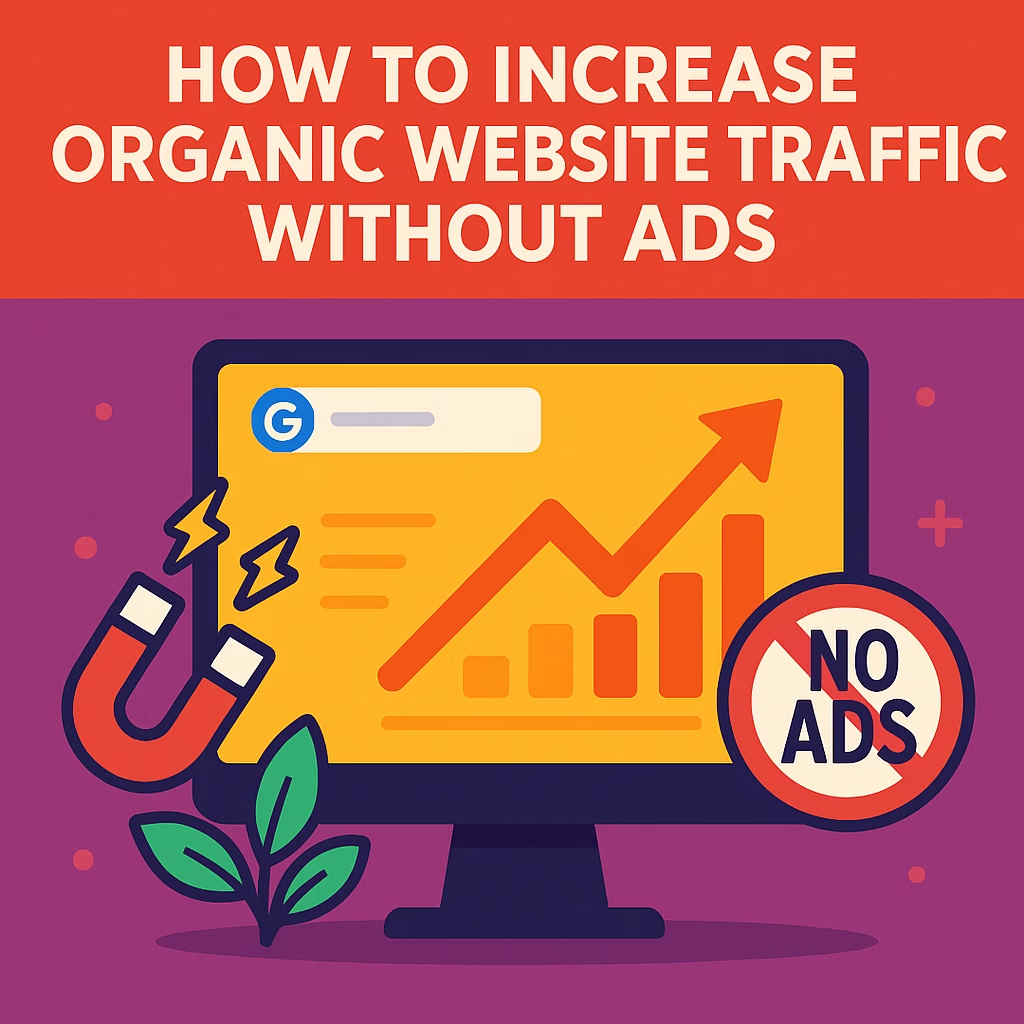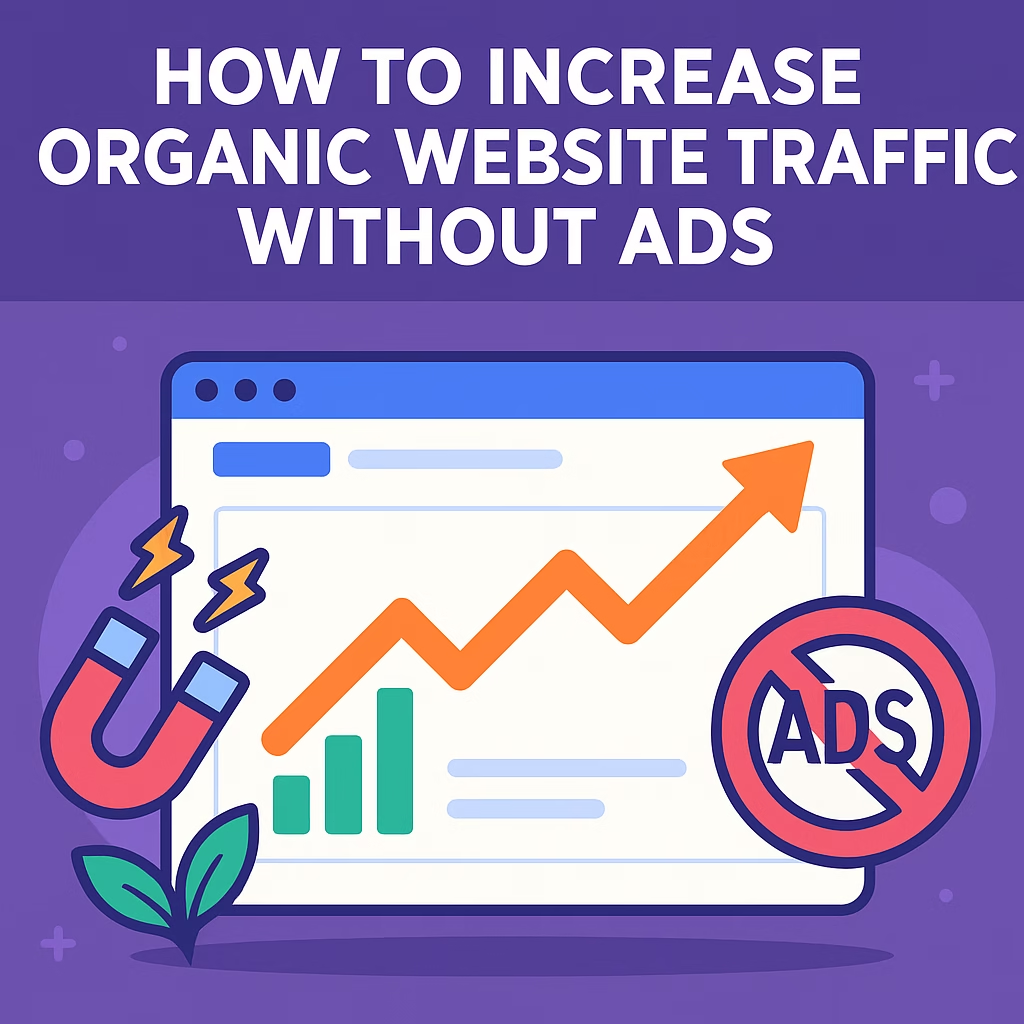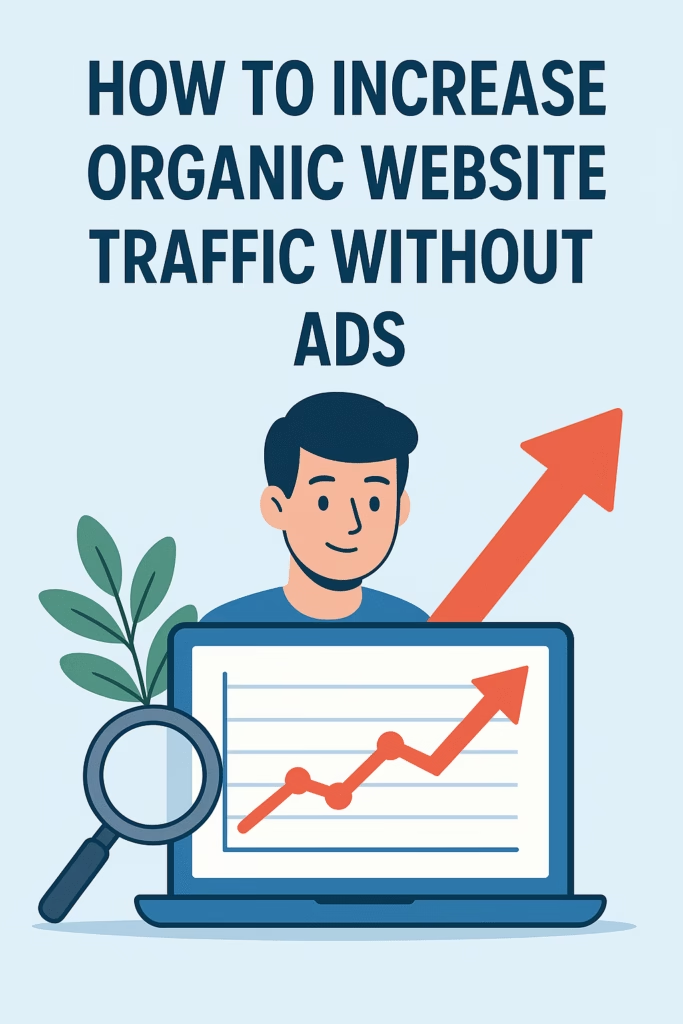
Click Here To More Help Full Article
Understanding Organic Traffic
Organic traffic refers to the visitors who land on your website through unpaid search results, primarily from search engines like Google, Bing, or Yahoo. This type of traffic is generated when users input queries and click on links that are not influenced by paid advertisements. Unlike paid traffic, where website owners allocate budget for visibility, organic traffic is a reflection of a website’s authority, content quality, and relevance to user searches. Consequently, organic traffic plays a pivotal role in a website’s long-term success and growth.
One of the fundamental differences between organic and paid traffic lies in the way each is acquired. Paid traffic typically comes from investing in advertising campaigns on various platforms, typically characterized by immediate visibility and short-term results. In contrast, organic traffic tends to grow gradually over time, fostering a more sustainable flow of visitors who are genuinely interested in the content offered. This method not only builds a solid audience base but also can enhance brand credibility due to the perceived authenticity that organic search results carry.
To illustrate the distinctions between organic and paid traffic, consider the following comparison:
| Criteria | Organic Traffic | Paid Traffic |
|---|---|---|
| Cost | Generally no direct cost, but requires investment in SEO and content creation | Requires ongoing financial investment for ads |
| Sustainability | Long-term; can yield consistent traffic over time | Short-term; traffic stops when payment ceases |
| Trustworthiness | Higher trust among users who prefer organic results | Can be perceived as less trustworthy due to the advertising nature |
By understanding organic traffic and its advantages, website owners can benefit substantially from applying effective strategies aimed at optimizing their content for search engines, ultimately leading to improved visibility and engagement.
Identifying Your Target Audience
Understanding your target audience is paramount for driving organic website traffic effectively. By accurately identifying who your audience is, you can create content that resonates with their interests, needs, and online behaviors. This foundational step not only enhances the relevance of your content but also aids in attracting the right visitors to your site.
To begin, it is essential to gather demographic information such as age, gender, location, and interests. This data can provide insights into the preferences and challenges faced by your audience. Utilizing analytics tools like Google Analytics can significantly streamline this process. These tools can help you track user behavior, allowing you to identify which content types are performing well and what segments of your audience engage the most with your website.
Another effective method for audience research is conducting surveys. Surveys enable you to solicit direct feedback from your existing audience, providing qualitative insights into their motivations and needs. You can employ various platforms to distribute these surveys, including social media and email marketing campaigns. Make sure to include open-ended questions that encourage comprehensive responses, offering a deeper understanding of their perspective.
Additionally, engaging with your audience on social media platforms provides immediate feedback and insight into user intent. Observing the conversations and interactions that occur on these channels can inform your content strategy and help refine your approach to meet the specific needs of your audience.
Ultimately, by investing time and resources into identifying and understanding your target audience, you can tailor your content more effectively. This directed approach enhances the potential for attracting organic traffic, as it aligns your offerings with the specific demands and interests of your visitors.

Creating Quality Content
In the digital marketing landscape, producing high-quality content is essential for attracting and retaining organic website traffic. Content serves as the foundation of any successful online presence, as it not only informs and engages the audience but also enhances search engine visibility. Originality is a critical element in crafting content that stands out; unique perspectives and insights provide value to readers, encouraging them to share and revisit your material. This positive engagement is key to creating a loyal audience base.
Readability is another vital aspect of effective content. The audience should readily grasp the information presented, which can be achieved through clear language, logical structure, and well-defined headings. Well-formatted content enhances user experience, making it easier for visitors to navigate and absorb key messages. Utilizing bullet points, concise paragraphs, and subheadings can contribute significantly to readability, ensuring that even complex topics remain accessible to a wider audience.
Relevance to target readers cannot be overstated in the realm of content creation. Understanding the demographics, interests, and problems of your audience allows for tailored content that resonates with their needs and preferences. This strategic alignment positions your material as a reliable resource, increasing the likelihood of repeat visits. Regular updates not only reflect current trends and insights but also signal to search engines that the site is active, which can positively impact rankings.
Moreover, diversifying content formats is an effective way to maintain engagement. Incorporating articles, videos, infographics, and podcasts caters to different learning styles and preferences, enhancing the overall user experience. Visitors are more likely to return to a site that offers a variety of formats, as they can choose the medium that best suits their needs. By focusing on these quality content elements, websites can foster a rich, engaging environment that encourages growth in organic traffic.
Implementing SEO Best Practices
To enhance organic website traffic, it is crucial to implement effective Search Engine Optimization (SEO) best practices. A foundational step in this process is conducting comprehensive keyword research. By identifying relevant keywords and phrases that potential visitors are using to search for information related to your content, you can tailor your efforts to meet their needs. Tools like Google Keyword Planner, SEMrush, and Ahrefs can assist in uncovering these valuable keywords, ensuring that your content aligns with user queries.
Once you have established your target keywords, the next step involves on-page optimization. This includes optimizing headers, meta descriptions, and alt texts. Headers (H1, H2, H3) should incorporate primary and secondary keywords to clarify content structure for both users and search engines. Meta descriptions, which appear in search results, should provide a concise yet compelling summary of your content. Properly crafted meta descriptions not only improve click-through rates but also play a role in ranking better in SERPs (Search Engine Results Pages). In addition, using descriptive alt texts for images enhances accessibility and provides context to search engines, further contributing to SEO efforts.
Another key aspect of SEO is mobile optimization, which is increasingly important in today’s digital landscape. With the majority of web traffic coming from mobile devices, websites that are not mobile-friendly risk losing substantial organic traffic. To optimize for mobile, ensure that your website has a responsive design that adapts seamlessly to various screen sizes. Additionally, page loading speed and user experience on mobile should be prioritized, as these factors significantly influence bounce rates and overall site performance.
Incorporating these SEO best practices will not only increase visibility in search engine results but also enhance user engagement, ultimately driving more organic traffic to your website.
Utilizing Social Media Effectively
In the current digital landscape, leveraging social media platforms is a critical approach to enhancing organic website traffic. Social media serves not only as a channel for communication but also as a powerful tool to amplify content reach and engagement. Various platforms such as Facebook, Twitter, Instagram, and LinkedIn offer unique audiences that can be targeted for increased visibility.
To begin with, crafting an effective posting strategy is paramount. Each platform has its own best practices regarding the frequency and timing of posts. For instance, Facebook tends to favor content that encourages interaction, while Instagram thrives on visually appealing posts. Employing a content calendar can assist in planning posts strategically, ensuring consistent engagement with followers. It is crucial to balance promotional content with informative and entertaining posts to retain audience interest and encourage shares, which ultimately can drive traffic back to your website.
Engagement is another vital component of using social media effectively. Responding to comments, participating in discussions, and actively seeking feedback can foster relationships with your audience. This rapport not only bolsters follower loyalty but also makes your content more likely to be shared, further spreading your website’s reach. Moreover, integrating links to your blog posts directly within social media updates can create a seamless path for users to click through to your site, thus increasing organic traffic.
Additionally, utilizing trending hashtags relevant to your niche can enhance content discoverability. This practice attracts new audiences who may not be aware of your work, broadening your outreach. Collaborating with influencers or engaging in partnerships can also amplify your message, as it allows you to tap into their established audiences, driving more organic traffic to your website.

Building Backlinks and Collaborations
Backlinks, also known as inbound links, are hyperlinks that direct users from one website to another. They serve as a crucial component of search engine optimization (SEO) as search engines like Google utilize them as a ranking factor. The underlying principle is that when a website links to another, it implies a level of trust and authority. Therefore, acquiring high-quality backlinks can significantly enhance a website’s credibility and organic traffic.
Establishing backlinks involves creating connections with other websites or blogs that are pertinent to your industry. The more reputable and relevant the site linking back to yours, the more valuable that backlink becomes. This ultimately improves your search engine rankings, thereby driving more organic traffic. One effective strategy for obtaining quality backlinks is through guest blogging. By writing articles for other blogs within your niche, you can include links to your website, thereby fostering mutual benefit and exposure to new audiences.
Another avenue to explore involves forming partnerships and collaborations with businesses or influencers in your field. Joint ventures, where both parties create content together or promote each other’s work, can not only enhance the visibility of both websites but also create an authentic backlinking structure. Networking plays an essential role in this process; attending industry events, webinars, and conferences can facilitate connections with like-minded individuals who may be willing to backlink to your content.
Finally, it is essential to ensure that the backlinks are genuinely relevant and from trusted sources. Quantity can hold some weight, but quality should always take precedence. By focusing on building high-caliber backlinks, you will not only improve your website’s SEO performance but also provide valuable content to your audience, further solidifying your online authority.
Engaging with Your Audience
Audience engagement plays a pivotal role in driving organic traffic to your website. When visitors feel connected to your content, they are more likely to return and share your material, thereby increasing visibility and attracting more potential readers. Engaging with your audience encourages a sense of community, which can significantly impact visitor loyalty and retention rates.
One effective way to foster a community is by actively responding to comments and feedback left on your blog posts. By addressing readers’ questions and acknowledging their contributions, you humanize your brand and encourage further dialogue. This direct interaction not only cultivates loyalty but also makes readers feel valued, increasing the likelihood that they will return to your site to engage with future content.
Creating polls and surveys on your website is another practical approach to engaging your audience. Polls allow you to gather valuable insights and opinions on various topics, while also making readers feel involved in the content creation process. When your audience sees that their input shapes the direction of your blog, they are more inclined to participate and stay connected.
Furthermore, soliciting feedback on your content encourages a collaborative environment where readers can express their preferences and interests. By incorporating their suggestions into future posts, you not only create relevant content but also strengthen your relationship with your audience. This responsiveness demonstrates that you value their opinions and are committed to providing them with the best possible experience.
In conclusion, fostering engagement with your audience is crucial for boosting organic website traffic. By actively responding to comments, creating interactive content like polls, and soliciting feedback, you can cultivate a loyal community that returns to your site frequently and spreads the word about your offerings. Ultimately, these strategies contribute to the sustained growth of your organic traffic without the need for paid ads.

Analyzing Traffic and Making Improvements
Monitoring website performance is a fundamental aspect of boosting organic traffic and ensuring that content resonates with audiences. To effectively track performance, website owners can utilize a variety of analytical tools that provide insights into traffic patterns, user behavior, and content engagement. Google Analytics is one of the most popular choices, offering detailed data about visitor demographics, traffic sources, and user interactions on the site.
Understanding these metrics enables website owners to identify which traffic sources are the most effective, where users are spending their time, and which pieces of content are driving engagement. For example, high bounce rates might indicate that landing pages are not providing the expected value, prompting the need for improvements to content or layout. Similarly, analyzing which content leads to conversions can help prioritize future topics and formats.
In addition to Google Analytics, tools such as SEMrush and Ahrefs offer competitive insights into keyword performance and organic search visibility. These platforms allow users to track their rankings and compare them with competitors, providing a broader context for what works well in their niche. Utilizing these tools can shed light on emerging trends and keyword opportunities, directing focus where it can yield the most significant results.
After collecting and analyzing data, the next step is to interpret the findings and make informed adjustments. This could involve optimizing underperforming content by enhancing keywords, updating information, or improving the user experience on the website. Also, conducting A/B tests on different content formats or headlines can assist in honing in on what resonates better with viewers. By consistently monitoring website performance and making informed improvements, webmasters can create a dynamic strategy that effectively increases organic traffic over time.
Summary and Call to Action
In this comprehensive guide, we have explored various strategies to enhance your organic website traffic without relying on paid advertisements. We began by discussing the importance of optimizing your content for search engines through effective keyword research and integration. By understanding the needs and preferences of your audience, you can create high-quality content that resonates with them, ultimately leading to increased traffic.
Furthermore, we highlighted the significance of optimizing website performance, ensuring quick loading times and mobile responsiveness. As users tend to abandon websites that are slow or difficult to navigate, enhancing user experience is a crucial step in retaining visitors. The utilization of social media platforms was also examined as a powerful tool for driving organic traffic. Sharing engaging content and interacting with followers can boost your online presence and foster a community around your brand.
In addition to these foundational strategies, we emphasized the relevance of building backlinks from authoritative websites, which can significantly improve your site’s credibility and search engine rankings. Collaborations with other content creators and industry players can yield mutual benefits, enhancing organic visibility for all parties involved. Lastly, regular analysis of your website’s analytics allows you to track your progress and make informed adjustments to your strategies.
As we conclude this guide, we encourage you to apply these techniques consistently. Embrace the journey of improving your organic website traffic step by step. By implementing these strategies, you can expect to see measurable results over time. Additionally, we recommend further reading on SEO best practices, content marketing, and social media strategies to deepen your understanding and refine your approach. Taking action today can set you on the path to achieving long-term organic growth.
Click Here To More Detail For This Topics.






